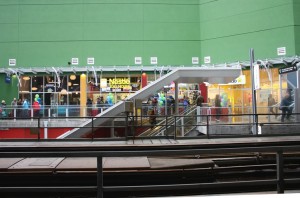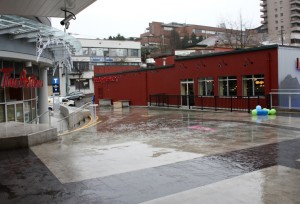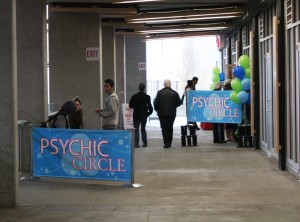This Monday New Westminster City Council is going to attack one of the great environmental issues of the day: the unsustainable harvesting of sharks for their fins.
These fins, when boiled long enough to get the urea stink out, dried, powdered, and added to soup, provide a certain gelatinous texture that apparently proves your wealth and success in some cultures. Their harvest from depleted shark populations is one of those long-standing environmental concerns that has only come to popular knowledge due to recent video-recorded cruelty to charismatic megafauna, and it is a certain cause celebre these days. I really have no problem with that.
One only has to look at the long list of animals endangered or made extinct because someone claimed eating bits of them will give you an erection to see just how asinine humans are in the collective, and how easy it is for a protected cultural belief to result in the decimation of an ecosystem. Sharks are important animals in the ocean, and just as banning the global ivory trade is an important step in protecting the elephants, banning shark fin may play a role in protecting endangered sharks. So ending the popularity of shark fin soup is probably a good thing.
In fact, a professional organization I work with, the Environmental Managers Association of BC awarded a grant a few months ago to a grass-roots organization called SharkTruth, who work to raise awareness at the consumer level about shark fin soup and the associated unsustainable harvesting of sharks. I fully supported this choice for a grant recipient, because I agree with their cause and the approach that group takes (if you care about this issue, please think about helping them out!).
So why am I against a Shark Fin Bylaw?
Ultimately, it is the Federal Government who (through a document called the Constitution Act of 1982) has the mandate and the responsibility to protect the oceans around Canada and the fishes within. It is also the sole level of government empowered to negotiate and sign international agreements like the Convention on International Trade in Endangered Species of Wild Fauna. It is also empowered to prevent the import and sale of things like ivory, rhino horn, tiger gall bladders, or whatever is getting sick old men up these days.
This is not a job that municipalities should, or even can, do. Do we imagine Bylaw officers inspecting the backs of restaurants for signs of shark fin? De we expect that offending soup is confiscated by a Bylaw officer, taken to a lab for analysis to determine if it indeed contained shark fin and not the much cheaper alternative (gelatin, which is kind of gross when you know what it is, but at least it is a by-product of meat possessing and can be sourced sustainably), then spend 6 months putting the case together to take the Restaurant Owner to court to recover a $1000 fine? Is this how you want your property tax dollars spent?
Of course it will never happen. The Restaurants will take Shark Fin off their menu (talk on the street is that the Starlight Casino hosts the only restaurant in town that sells shark fin soup) and, if they are unscrupulous, will continue to sell it in a hush-hush kind of way for special events only, and no money will be spent on enforcement at all.
So what purpose the Bylaw? To “shame” the restaurants into hiding their shark fins? To show support for a noble cause? I hate to be the guy who says this: but doesn’t the City have bigger environmental responsibility fights to put their energy into – ones they actually have the jurisdiction to do something about?
It has taken only a couple of months for this idea to come to the City, and for a Bylaw to see third reading. Meanwhile, it has been 18 months – a year and a half- since I went to Council to remind them that we are one of the few municipalities in the Lower Mainland that does not have a Tree Protection Bylaw. In June of 2011, Council resolved the following:
“WHEREAS trees are essential to air quality, esthetics and quality of life;
BE IT RESOLVED THAT New Westminster develop a Tree Retention / Removal Bylaw for both public and private property.”
…and we have not had a single update on progress towards that Bylaw in a year anda half.
Protecting the trees in our neighbourhoods is something our City Council has the power and the jurisdiction to do. Saving sharks in the East China Sea is both outside of their jurisdiction and beyond their powers. So, why is there a rush to do the second and no interest in doing the first?
Yes, the worldwide decimation of shark populations and the trade in shark fins is a legitimate concern. The City can (without a Bylaw) express their support for the banning of shark fin imports- it can even choose to publicly shame businesses that choose to serve it, or refuse them a business licence (as they threatened to do recently with a legal medical marijuana dispensary). But to what end?
For the Feds to deal with this issue domestically, it would only require an update of the Species List under the CITES Act to include those species of sharks that are used for fin trade: it wouldn’t even require a new piece of legislation. No debate, no committee work, just a feat of Ministerial signature would get it done. The necessary inspection and enforcement procedures are already in place, and it would allow Canada to be one of the leaders internationally in the protection of sharks in the world’s oceans (wouldn’t it be nice to once again be the leader in something positive?).
My MP has already been outspoken on this issue, the Minister of Fisheries isn’t really interested in dealing with the issue, nor is the Federal Minister of (cough) Environment. This, however, is the only place where useful action on this issue can happen. Supporting Fin Donnelly to get action at the Federal Level and, in turn, the International Level is the appropriate way to address this issue under the Constitution of Canada.
Then City Council and Staff can stop wasting their time, and get on with that 18-month old resolution to start protecting trees in the City.

































